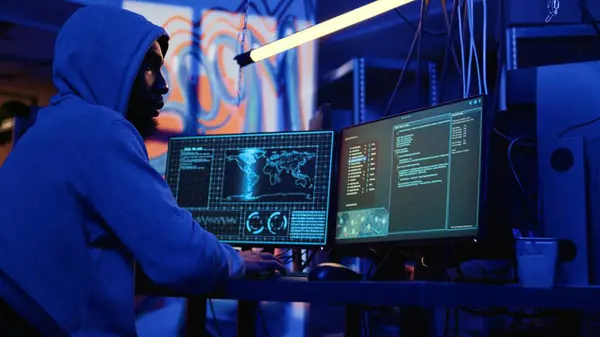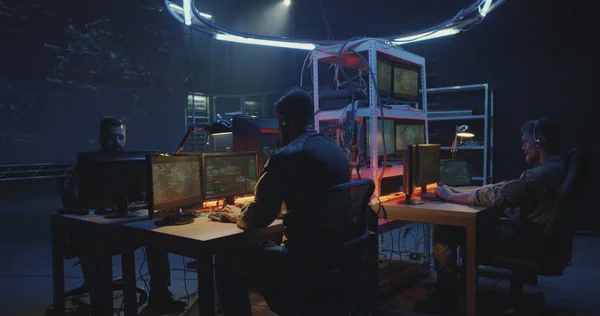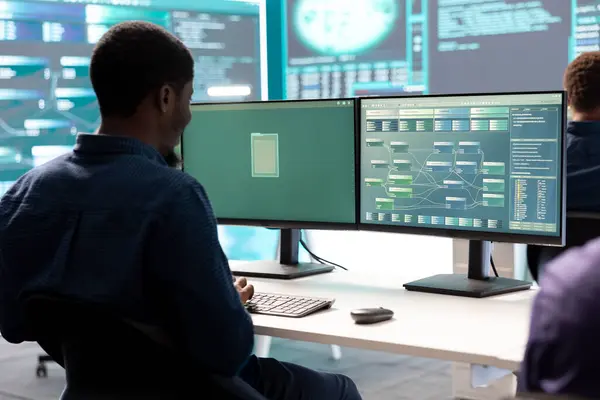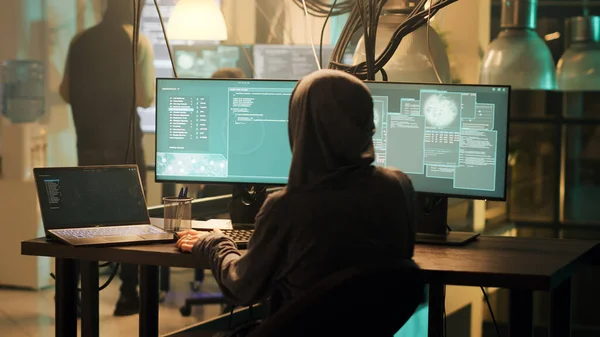
“Brett Johnson used to be the type of criminal Hollywood scripts are made about-stealing identities, selling stolen credit cards, and raking in more than $100,000 a month from tax-return fraud. Then he switched sides, working with the Secret Service to dismantle the same type of schemes he once masterminded. Now, his warnings about the future of cybercrime sound less like paranoia and more like a survival guide.

Cybercrime is industrializing, not just evolving. From AI-powered scams to fraud factories fueled by human trafficking, the threats multiply faster than most defenses can keep up. Johnson’s insider view of some of the recent global crackdowns reveals a chilling reality: criminals no longer have to hustle alone, but instead are running multinational operations with Fortune 500 efficiency. Here are seven rising threats and protective moves that cybersecurity-conscious professionals, tech-savvy individuals, and business leaders need to know-straight from someone who’s been on both sides of the law.

1. Deepfakes That Shatter Trust
According to Johnson, deepfakes are becoming the ultimate trust hack: bad actors can fake voice messages with conviction, manipulate faces to mimic the exact expressions of others, and even hold phony live video calls. In one recent, high-profile incident, a finance clerk approved overseas transfers of more than $25 million after a deepfake video call impersonated his co-workers, including the CFO. The danger lies in speed and precision: AI tools can customize speech patterns and facial cues to meet the expectations of a mark, dispensing with the time required for rapport-building. As Johnson says, “We get to a point where we’re no longer able to trust anything that we see or hear in an online environment, and that becomes really dangerous.” For businesses, this means rethinking the whole issue of verification beyond what’s visible or audible.

2. Scam Farms Run Like Corporations
Forget lone hackers; today’s fraud is run from scam farms staffed with trafficked workers operating in shifts under supervisors. These facilities specialise in high-yield cons such as “pig butchering”, a confidence trick where scammers build fake romantic relationships to drain victims’ savings. Victims are not just losing money; workers inside these compounds face torture, confinement, and forced labor. The UN Office on Drugs and Crime describes Southeast Asia as “ground zero for the global scamming industry,” and the operations often camouflage themselves as legitimate businesses. The corporate-style structure means that scams can operate 24/7, targeting multiple markets in turn.

3. Synthetic Identities: Invisible Fraudsters
Synthetic identity fraud uses a combination of real and false personal data to create an entirely new digital persona. Johnson describes it as the number one form of identity theft worldwide and responsible for 80% of new account fraud and billions in losses. Once a synthetic identity gains credit, it can create accounts, access loans, and move ill-gotten gains cleanly. In most cases, it disappears before being found out. Classic fraud monitoring can’t catch these “people,” as they don’t exist in the physical sense. Synthetic IDs are very much automated in their creation and utilization, which raises a nightmare scenario for banks and regulators alike.

4. AI-powered criminal service providers
The criminal networks are morphing into full-fledged service providers, offering AI-generated scams, money laundering, and even disinformation campaigns. UNODC’s Benedikt Hofmann contends that such scam farms are “places of innovation” that can pivot faster than any legitimate tech company. Generative AI enables them to substitute hundreds of human scammers for well-programmed applications and extend their reach without increasing manpower. It is the industrialization of fraud: attacks can be custom, multilingual, and relentless at a fraction of the cost.

5. Human Trafficking Fuels Cybercrime
The human cost of the scam farms is staggering: Hundreds of thousands of trafficked people are forced to work in cyberfraud operations across Cambodia, Myanmar, Laos, the Philippines, and Malaysia, according to rights experts. Victims face beatings, electrocution, and sexual violence; many escape only after ransom payments. These conditions turn cybercrime into a humanitarian crisis. It is poverty and the lack of safe migration routes that allow criminals to recruit victims, thus guaranteeing the supply of labor for scams. This is a matter not just of law enforcement but also of tackling the socio-economic drivers feeding the industry.

6. Global Criminal Empires and Political Protection
Cases such as the alleged leadership of Prince Group by Cambodian national Chen Zhi have shown how cybercrime can function cloaked in political influence. Prosecutors say the group ran forced-labor scam compounds, laundered billions through cryptocurrency and bribed officials to avoid disruption. The scale is unprecedented: the U.S. Department of Justice seized an estimated $15 billion in Bitcoin associated with such operations, said to be the largest forfeiture in its history. Such networks blur the line between corporate enterprise and organized crime, making them harder to dismantle.

7. Six Protective Moves You Can Make Now
- Simple yet effective is Johnson’s defensive playbook:
- Practice situational awareness online: assume predators exist on every platform.
- Freeze the credit of everyone in your household to block new account fraud.
- Set up account alerts to monitor usage in real time.
- Use unique passwords for every account.
- Enable multi-factor authentication among other tools.
- Limit the amount of personal information shared on social media to reduce exploitable data.

It will not make you invincible, but it raises the cost and complexity for the attackers-often enough to make them move to other easier targets. The next chapter in the story of cybercrime doesn’t revolve around lone hackers; rather, it’s about organized, AI-enhanced empires that outpace traditional defenses. What Johnson makes clear is that the line between online trust and deception is disappearing fast. Safety will mean a mix of personal vigilance and systemic change, as the criminals aren’t going to slow down-and neither should the response.


